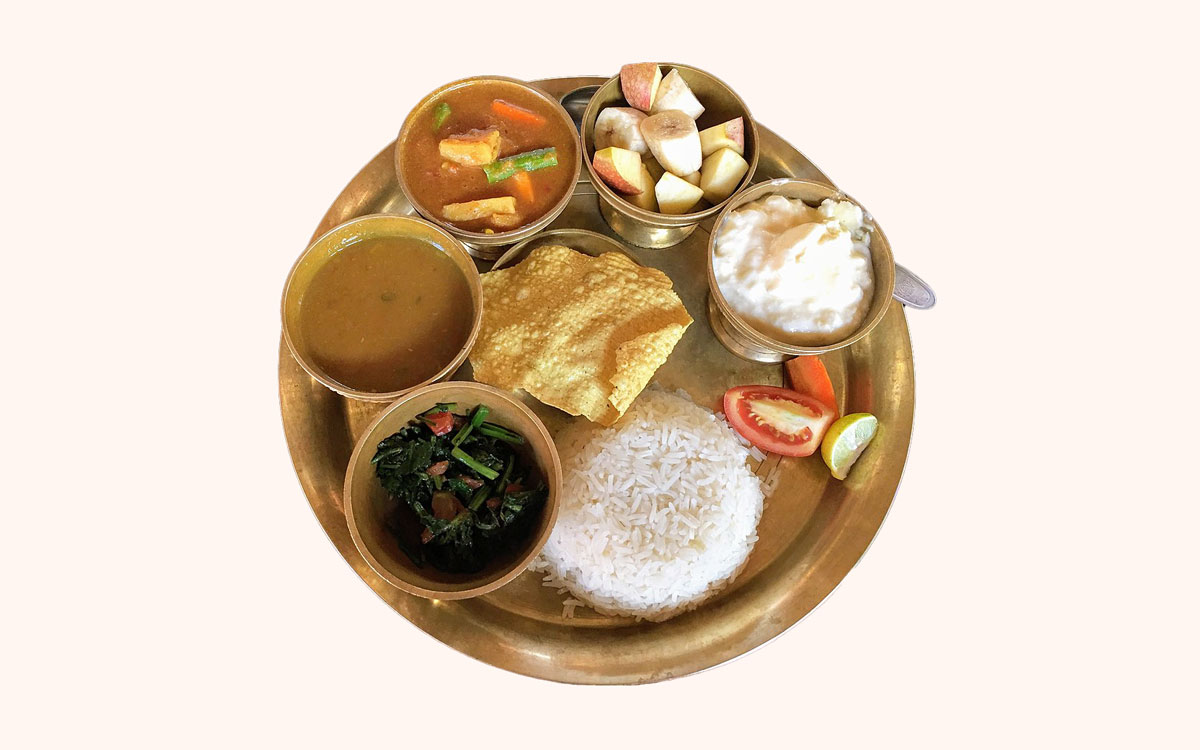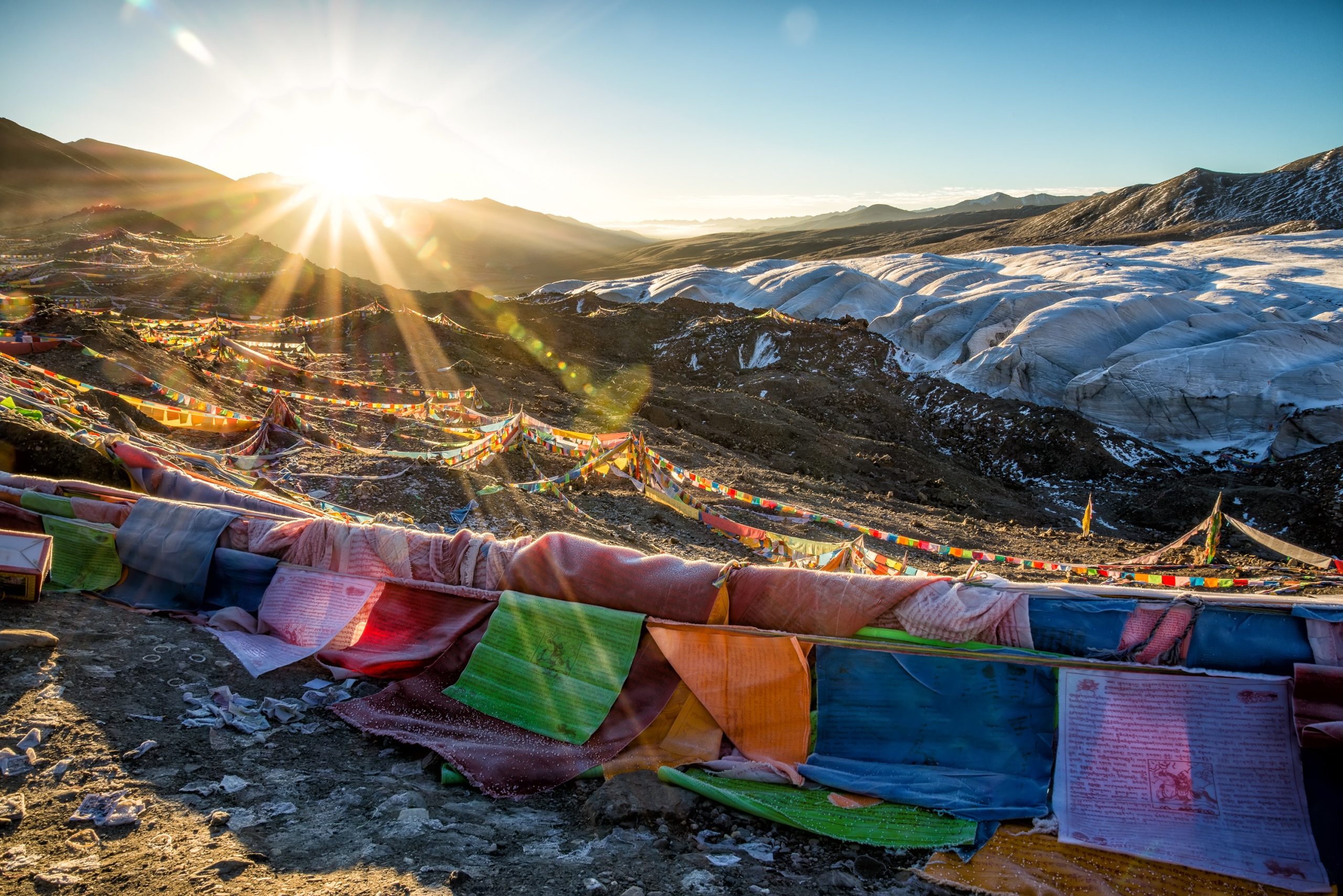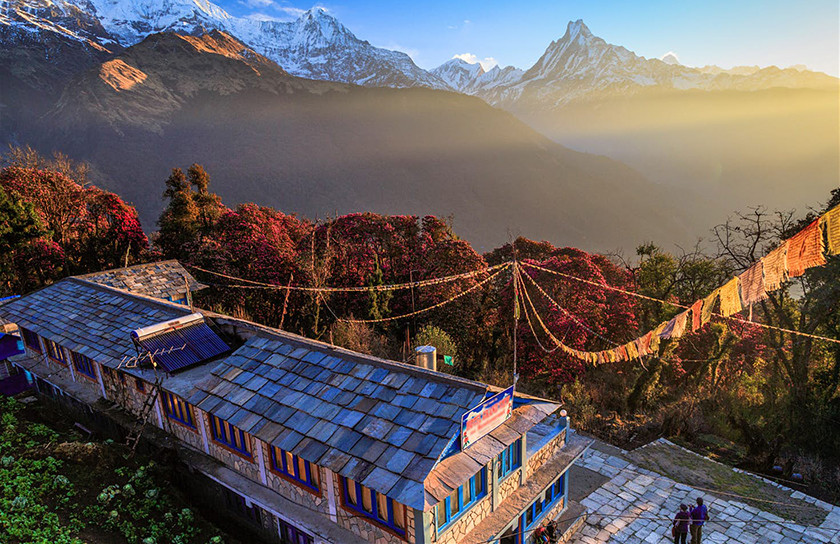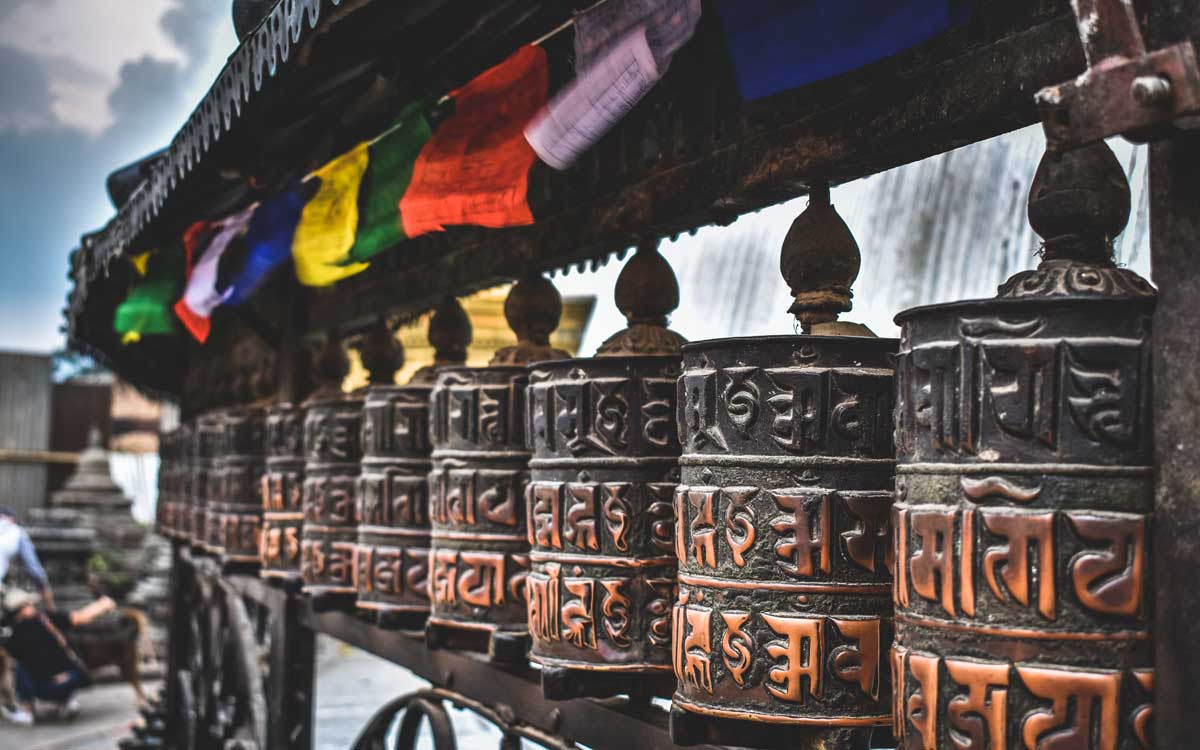Nepali food, renowned for its unique taste and distinct style, offers a culinary experience like no other. This vibrant cuisine combines an array of rare and exquisite ingredients, resulting in a medley of flavors that reflects Nepal’s rich cultural heritage.
From the majestic Himalayas to the fertile plains, Nepali food showcases the diverse geography and traditions of the region.
With an abundance of aromatic spices and indigenous produce, Nepali cuisine is a delightful fusion of flavors. The use of fresh herbs, such as ginger, garlic, and coriander, enhances the dishes, while spices like cumin, turmeric, and cardamom add depth and complexity.
Whether you savor the spicy kick of a traditional curry or the subtle sweetness of a homemade dessert, each bite transports you to the heart of Nepal.
Nepali food not only satisfies the palate but also reflects the country’s cultural heritage. Passed down through generations, traditional recipes and cooking techniques are an integral part of Nepali identity.
The art of preparing sel roti or momo dumplings or simmering dal bhat, the staple dish, is steeped in history and cherished by Nepali families. Sharing a meal together embodies the warmth, hospitality, and communal spirit that define Nepali culture.
Immerse yourself in the extraordinary and diverse cuisine of Nepal, where taste meets tradition and every meal is a celebration of flavors. Get ready to indulge in a gastronomic adventure like no other.
Daal Bhat Tarkari
“Dal Bhat Tarkari” represents authentic Nepali food. It consists of “Dal,” a stew made from lentils or other pulses, “Bhat,” which is steamed rice, and “Tarkari,” referring to seasonal vegetables.
This traditional is a staple in Nepali households and can be complemented with “Saag,” or spinach, along with a side of pickle.
Depending on individual preferences, one can also enjoy Dhal Bhat Tarkari with meat or fish curry.
This famous Nepali food has a history of over 2000 years and is commonly consumed twice a day for both lunch and dinner.
It is highly regarded for its nutritional value, providing a rich source of carbohydrates, protein, fiber, vitamins, and minerals.
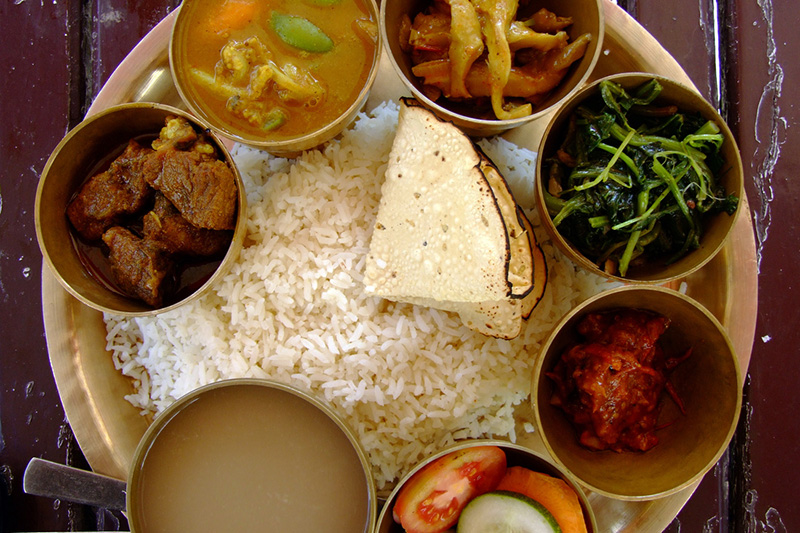
Additionally, Dhal Bhat Tarkari is a particularly popular foods in Nepal in trekking regions like Everest Base Camp Trek, Annapurna Base Camp Trek, Manaslu, etc.
It is favored for its ability to provide ample stamina during challenging climbs while being budget-friendly, allowing trekkers to eat as much as they need in a single meal.
Momo
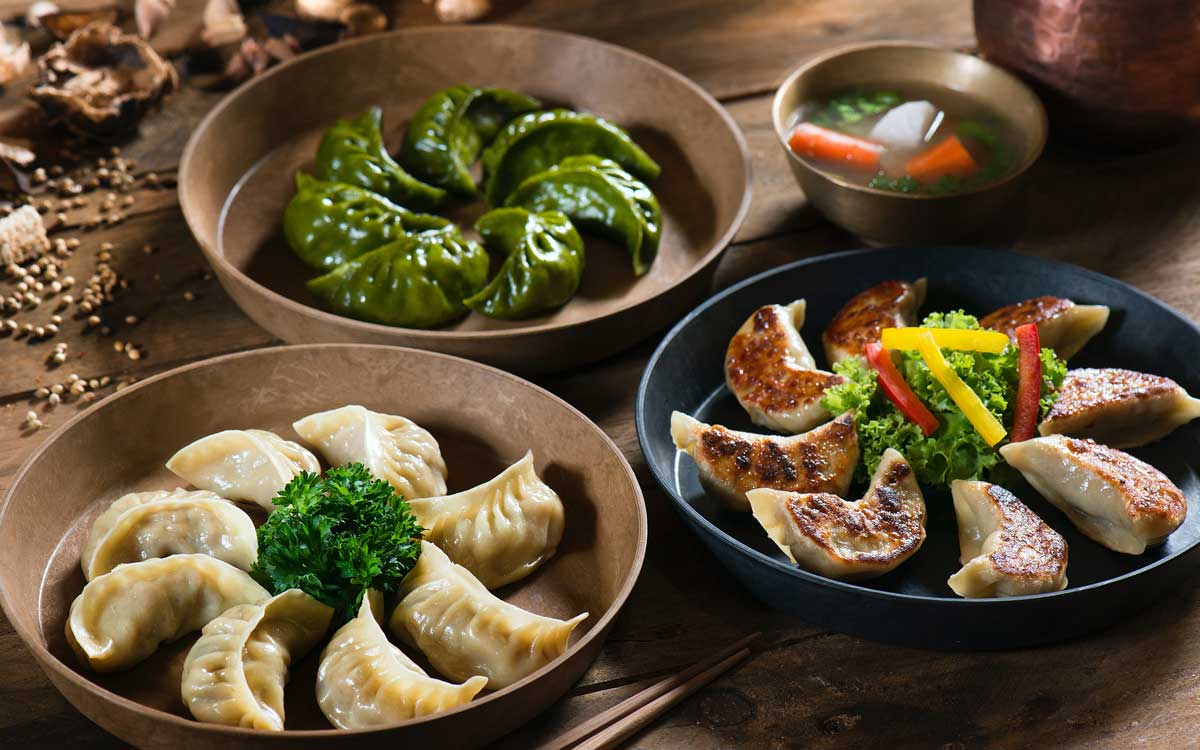
Momo is a type of dumpling which is made from dough usually filled with minced meat-buffalo, chicken and pork-and also with vegetables.
It is usually steamed or fried found in almost every restaurant, hotel and motel of Nepal and mainly eaten as an appetizer. This dish is very popular in almost every corner of Nepal. Momo is a must-try food item of Nepalese cuisine once you are here.
Chatamari
Chatamari, often referred to as the “Newari Pizza,” is an authentic and best Nepali food that delights food enthusiasts.
The dish features a rice flour dough as its base, which is then topped with flavorful minced meat, such as buffalo or chicken, along with a mix of other vegetables like onions, coriander leaves, and eggs.
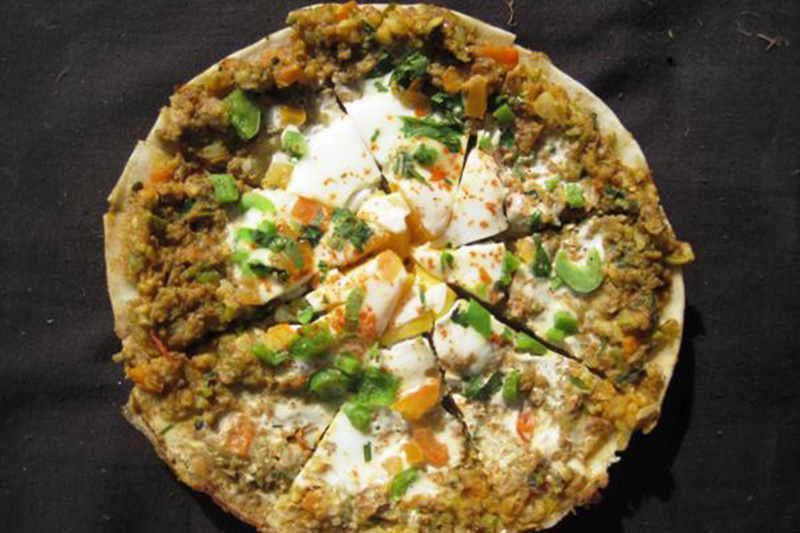
Being a mouthwatering fusion of various flavors, Chatamari appeals to a wide range of tastes and Nepali dishes.
Additionally, it offers a budget-friendly option for those seeking delicious and affordable meals, making it the best Nepali food among budget-minded eaters. Whether enjoyed as a savory snack or a satisfying meal, Chatamari provides a delightful experience of Nepali culinary culture.
Dheedo
Dhindo, also known as “Dhidati” in Sanskrit literature, is a traditional popular food in Nepal for over a thousand years, especially in the dry regions where cultivating rice and wheat crops is challenging due to high altitude and temperature.
The preparation of Dhindo involves boiling millet and later corn flour, which became a popular alternative after its introduction to Nepal in the 16th century.
Traditionally, it is cooked in an iron pot called “Taapke.”
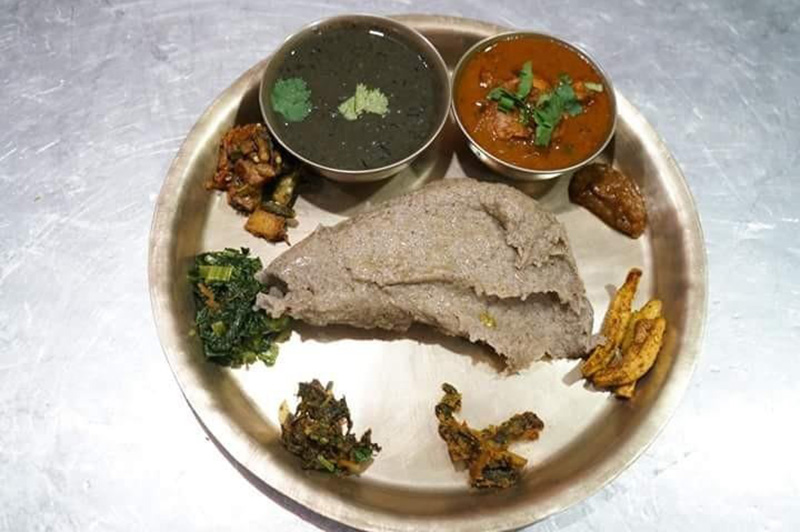
DheedoThis authentic Nepali food is a rich source of protein and iron, offering high carbohydrates and fiber that provide essential nutrition to people living in the mountains.
It is commonly served with a side dish called “Gundruk,” which is a fermented and preserved leafy vegetable.
Dhindo is a healthy option for diabetics, vegans, and those who prefer gluten-free foods and also serves as a nourishing and sustaining meal for the people of Nepal’s mountainous regions.
However, nowadays the availability of Dhindo has been widely spread in Nepalese restaurants.
This has contributed to its recognition as a significant part of Nepali dishes, and it continues to be appreciated for its taste, nutritional benefits, and cultural heritage.
Samay Baji (Newari Khaja Set)
Trying Samay Baji is a must in Nepal, as it offers a wonderful opportunity to experience the diverse and authentic flavors of Nepali dishes.
Samay Baji is a popular food in Nepal among the Newar indigenous people of Nepal, and its name translates to “time food” in Nepal Bhasa.
It holds special significance and is typically prepared and enjoyed during essential occasions like Newari weddings, festivals, and religious ceremonies.
This traditional Newari food is a delightful combination of various Nepali dishes, making it a diverse and flavorsome meal.
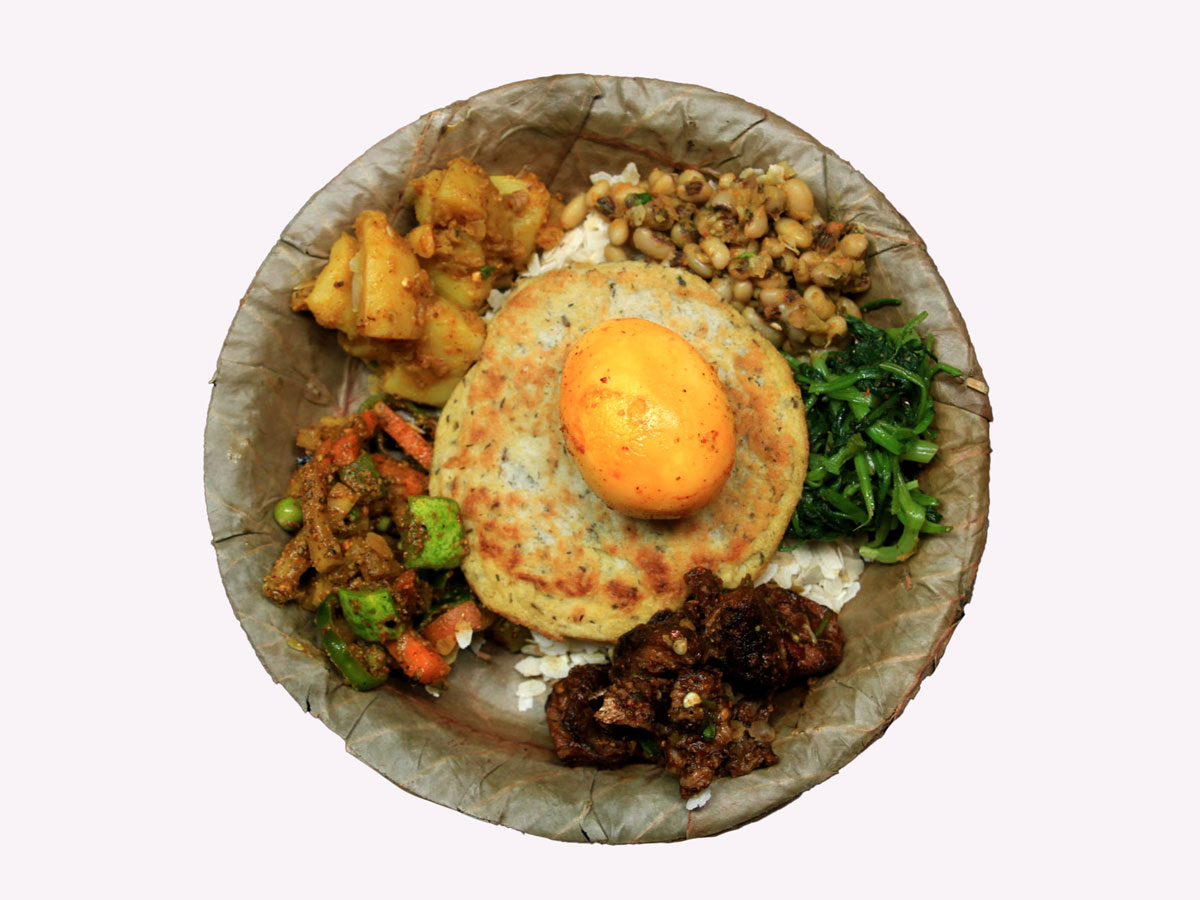
It includes beaten rice (Chuira), Black-eye peas curry (Bhuti), fried boiled eggs (Khen), spinach (Saag), Fried boiled spiced potatoes (Aloo Sadheko), Brown or black soybean (Bhatmaas Sadheko), radish and carrot pickle (Mula ko Achar), fried fish (Maccha), lentil patties (Bara known as wo), and spicy grilled buffalo meat (Choila).
This scrumptious spread is usually accompanied by a Newari beverage called “Aila.”
Not only is Samay Baji the best food in Nepal, but it is also highly nutritious due to the variety of authentic ingredients used in its preparation.
Nowadays, you can easily find this traditional dish in Newari cuisine Nepalese restaurants near popular cultural heritage sites like Kathmandu Durbar Square, Patan Durbar Square, and Bhaktapur Durbar Square.
It remains a cherished part of Newar culture, bringing people together during important gatherings and celebrations.
Juju Dhau
Juju Dhau, known as the “king of yogurt,” is a luscious and creamy dessert that holds a special place in Nepali cuisine. It is made from buffalo milk, which contributes to its rich and indulgent texture. This famous dessert is particularly associated with the cultural heritage site “Bhaktapur Durbar Square” in Nepal.
The term “Dhau” simply means “yogurt” in the Newari language, and Juju Dhau refers to the unique and special yogurt prepared by the Newari people of Bhaktapur. It is a dessert that showcases the culinary expertise of the Newari community in this region.
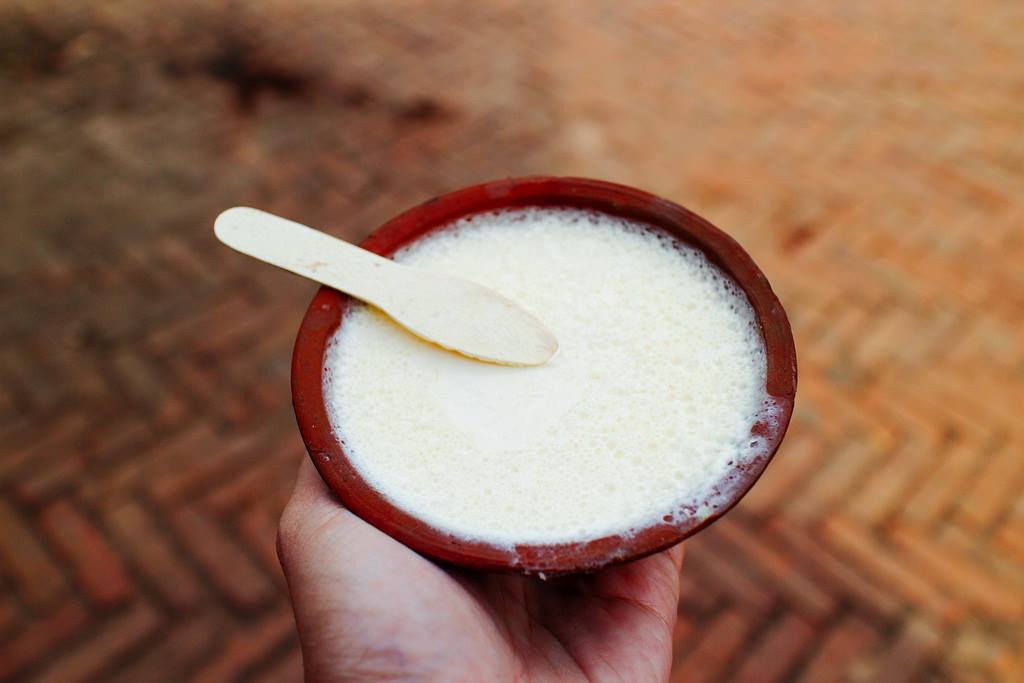
What adds to the charm of Juju Dhau is the traditional way it is served—in “kataura,” a clay pot crafted exclusively by the indigenous Newari potters. Bhaktapur is renowned for its pottery, and this craftsmanship is intimately connected with the presentation of Juju Dhau, enhancing the overall experience of savoring this delightful dessert.
Thukpa
Thukpa, a nourishing and satisfying noodle soup, is a favored dish, particularly during chilly days, and it has gained popularity in Nepal, Tibet, and India. Its origins can be traced back to the eastern part of Tibet.
This hearty soup consists of boiled wheat flour noodles served in a flavorful broth crafted from a combination of water, stock, and various spices like ginger, garlic, turmeric, and coriander.
Moreover, Thukpa has earned a reputation as the best food in Nepal during high-altitude trekking, as it aids in acclimatization to the altitude. It is often served alongside chili sauce, adding extra zest to this Nepali dish.
Sel roti
Sel roti holds significant prominence in Nepali culture and is a renowned delicacy prepared during major Nepalese festivals like Dashain and Tihar, cherished in households across the country.
This delectable treat is a ring-shaped, sweet fried rice dough, created using a blend of ghee, rice flour, sugar, and spices before being carefully fried in cooking oil.
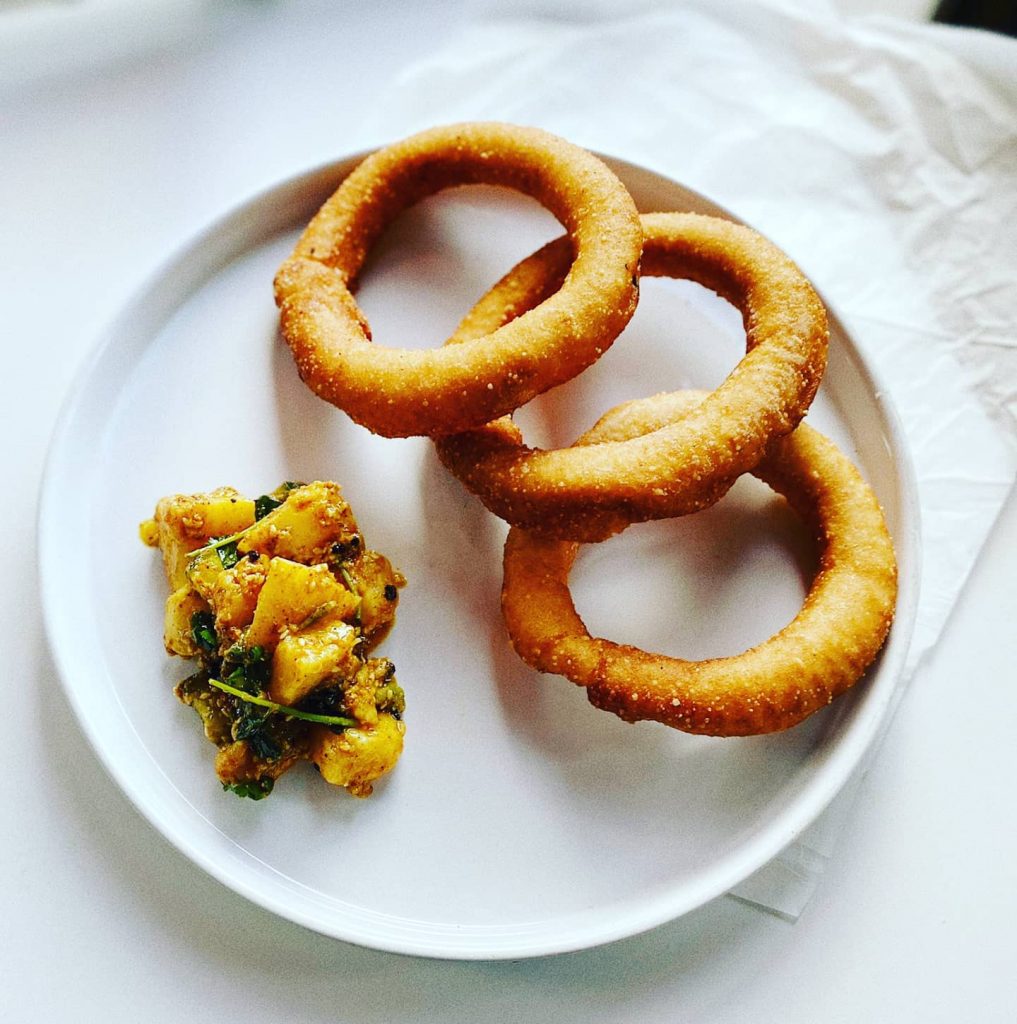
Aside from being a festive favorite, Sel roti is also highly favored as a tea-time snack in Nepal. Its unique taste and texture make it the perfect accompaniment to a warm cup of tea, adding to the joy of sharing moments with loved ones.
Maharaja thali
Maharaja Thali, which translates to “King’s Platter,” is a grand and lavish thali featuring over 25 dishes, originally associated with Indian royalty. Over time, it has also become popular in Nepal, showcasing the rich traditions of Nepali hospitality and cuisine.
This opulent thali is designed to leave diners feeling completely satiated and content.
In the non-vegetarian version of Maharaja Thali, an array of tantalizing dishes is served. These may include Fish Fry, garlic chicken, butter chicken, Naan (Indian bread), chicken biryani, Paneer butter masala (a vegetarian dish made with cottage cheese), tandoori alu (grilled spiced potatoes), and various other delectable items.
The Maharaja Thali represents a grand culinary experience, offering a delightful journey through the flavors of India and Nepal. It is a celebration of abundant food and the heritage of gracious hospitality.
Ghongi – (a delicacy of snail)
Ghongi, a distinctive and exotic dish cherished by the Tharu community of Nepal in the Terai region, is a traditional and authentic Nepali food made from snails.
Interestingly, this dish is also considered a delicacy known as “Escargot” in France.
The Tharu people have long enjoyed Ghongi as a nutritious curry, commonly served with steamed rice in a flavorful gravy.
Beyond its unique taste, Ghongi is highly regarded for its nutritional value and is the best food in Nepal.
The snail meat is believed to boost immunity against malaria in the Terai region, contribute to stronger bones, and serve as a healthy protein source, particularly beneficial for pregnant women.
By savoring Ghongi, you not only experience the flavors of Nepal but also connect with the cultural heritage of its indigenous people and food in Nepal.
Food serves as a universal love language that connects us not only to culinary delights but also to the people, places, and cultures they represent.
In the context of Nepal, traditional recipes and cooking techniques are an essential part of the country’s identity, passed down through generations.
The vibrant and aromatic spices used in Nepali dishes create a delightful fusion of flavors that tantalize the taste buds.
Fresh herbs like ginger, garlic, and coriander infuse the dishes with their unique essence, while spices such as cumin, turmeric, and cardamom add depth and complexity to the preparations.
For those fortunate enough to visit Nepal, trying out the five famous Nepali food mentioned earlier would be a wonderful culinary adventure, enabling them to immerse themselves in the country’s rich gastronomic heritage.
And even for those who cannot physically visit Nepal, the presence of Nepalese restaurants around the world offers an opportunity to experience the flavors of this diverse and delightful cuisine.
Nepali people and their delectable dishes have found a global presence, making it possible to savor a taste of Nepal in different corners of the world.
